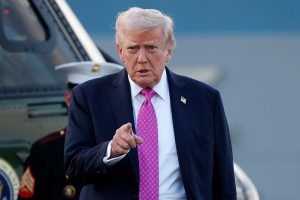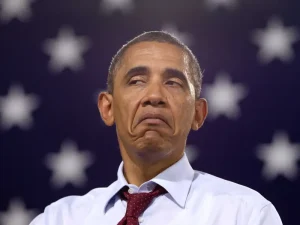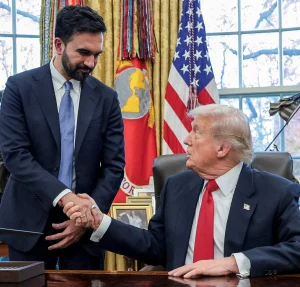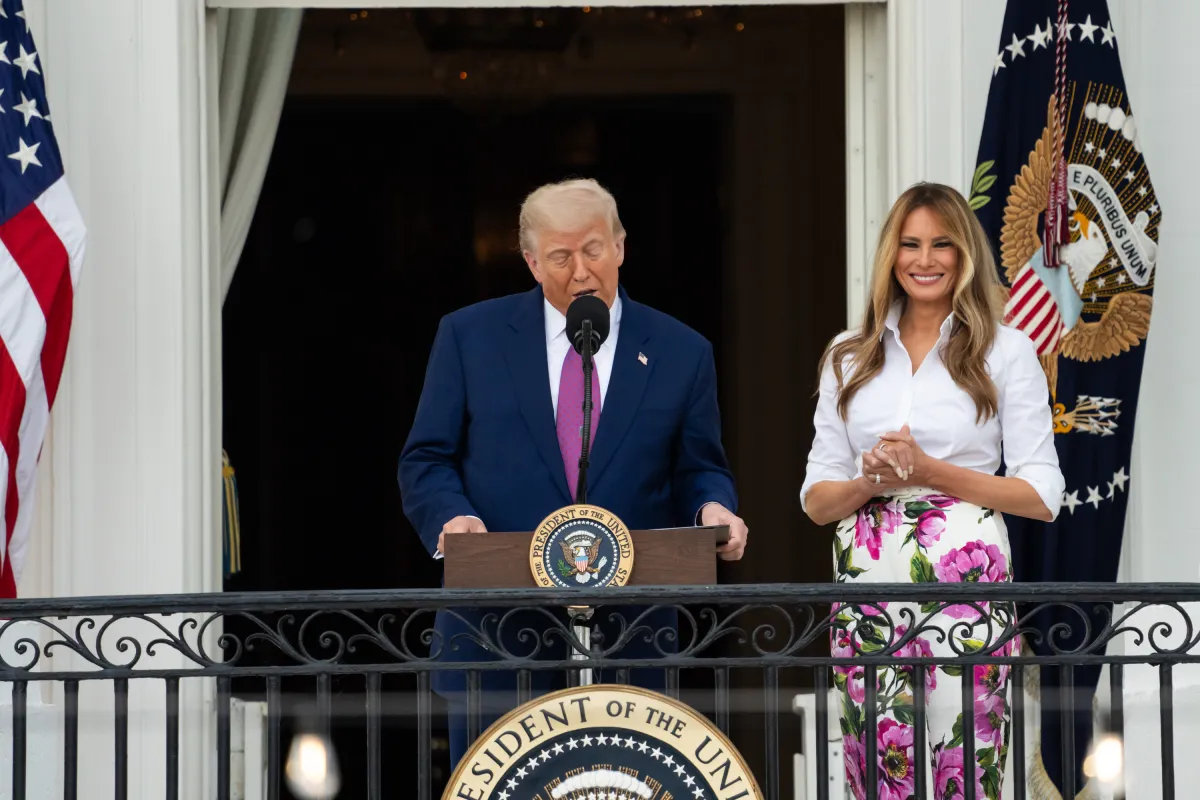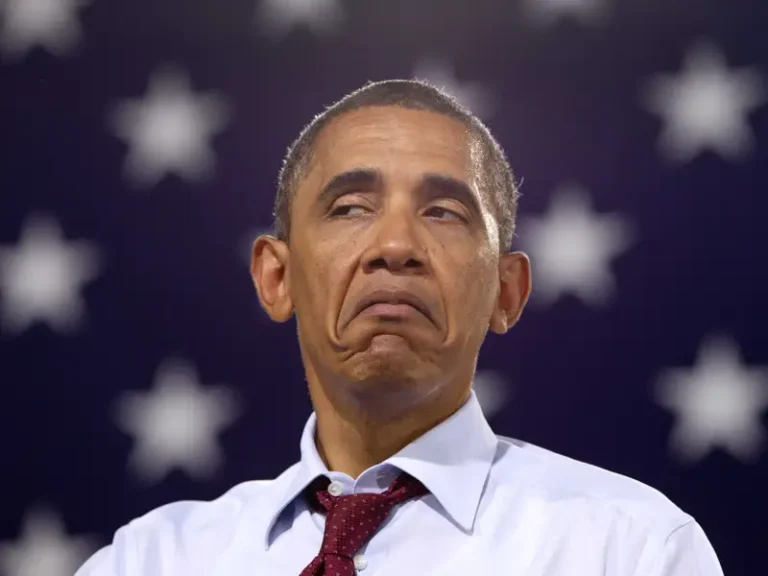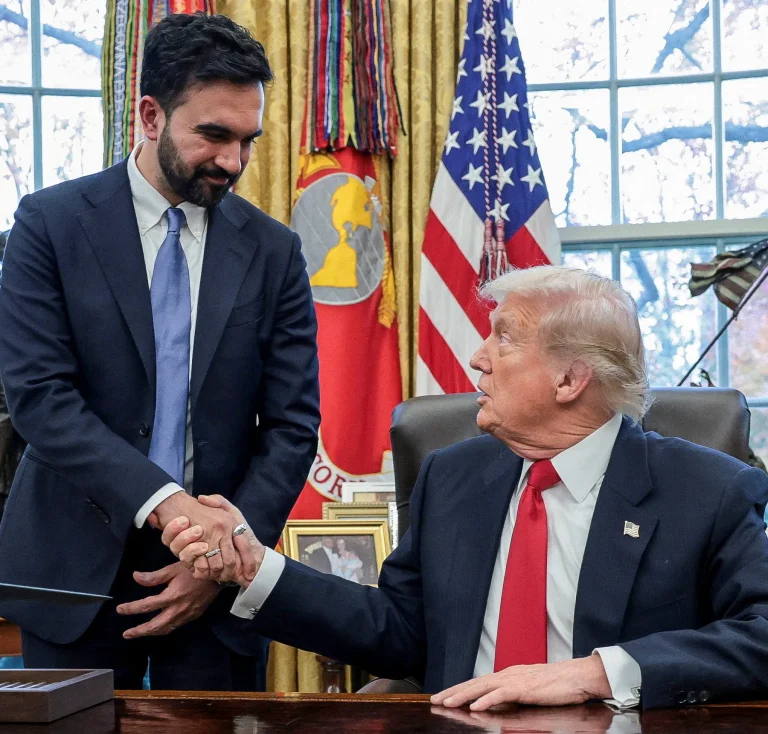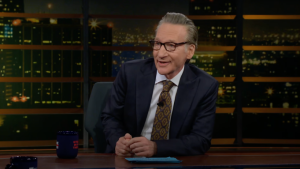In a dramatic shift that has drawn immediate backlash and widespread ridicule online, the Trump administration has announced a staggering increase in the price of the H-1B visa, one of the United States’ most widely used pathways for skilled foreign workers.
Under a new executive order, the fee for the visa will now be $100,000 per year, up from the previous $1,500 — an increase of more than 6,500 percent. The move, officials say, is intended to curb “abuse” of the system and prioritize employment opportunities for American citizens.
But for many observers, the announcement carried an unexpected layer of irony: the First Lady, Melania Trump, herself arrived in the United States on an H-1B visa nearly three decades ago.
The Policy Shift
The H-1B visa program, established in 1990, allows U.S. employers to hire foreign workers in specialty occupations, typically requiring highly specialized knowledge in fields like science, technology, engineering, and mathematics (STEM). It has also occasionally been used to employ foreign models and entertainers.
According to U.S. Commerce Secretary Howard Lutnick, the new $100,000 annual fee will apply to all new H-1B applicants, and employers will be responsible for paying the fee for the duration of the visa, up to six years.
“The company needs to decide… is the person valuable enough to have a $100,000-a-year payment to the government, or they should head home, and they should go hire an American,” Lutnick said. He also insisted that “all of the big companies are on board,” citing Amazon, Tata, Microsoft, Meta, Apple, and Google as major users of the program.
The new policy takes effect September 21, 2025, and is expected to dramatically reduce applications from foreign nationals, particularly from countries that historically dominate the H-1B program, such as India, which accounts for roughly 72% of all applicants.
The Melania Trump Connection
Social media users were quick to point out a striking historical irony: Melania Trump, née Knauss, entered the U.S. on an H-1B visa in October 1996 to pursue her modeling career after being recruited by catwalk scout and business owner Paolo Zampolli. Two years later, she was introduced to Donald Trump, beginning a relationship that would eventually lead to marriage and the position of First Lady.
Observers highlighted that had the current $100,000 fee existed in the 1990s, Melania’s path to the United States might have been effectively blocked.
“Just noting Melania Trump — then Melania Knauss — came to the U.S. on an H-1B visa in October 1996,” one Twitter user wrote, alongside archival photos of her early career in New York.
Another user commented: “Donald Trump just crushed the American Dream for Indians. H-1B visa fees increased to annual charges of $100,000. Current fee: $1,500. The irony is The First Lady Melania Trump, also received an H-1B visa in 1996.”
The internet response was immediate and biting, with memes circulating that juxtaposed Melania’s glamorous early career with the drastically inflated fees now required for prospective visa holders.
Economic and Industry Impacts
Experts warn that the dramatic fee increase will have far-reaching consequences for U.S. companies that rely on foreign talent. Tech giants, outsourcing firms, and research institutions are likely to reconsider or drastically reduce their use of H-1B visas.
Dr. Nina Patel, a labor economist at Stanford University, told reporters: “An annual fee of $100,000 is prohibitive for most companies. Smaller tech startups and research labs, which often rely on international talent to compete globally, will be effectively priced out. This could slow innovation and job creation.”
Amazon, the largest corporate user of H-1B visas, employs thousands of foreign nationals in roles ranging from software engineering to cloud computing. Other major tech companies, including Microsoft, Google, Apple, and Meta, could see similar disruptions. Tata, the Indian multinational, also heavily relies on H-1B hires for its U.S. operations.
Industry analysts warn that the steep fee may encourage some companies to offshore work or seek alternative visa categories with lower costs.
Administration’s Justification
The Trump administration framed the fee increase as a necessary step to protect American workers. Secretary Lutnick emphasized that the hike is aimed at reducing systemic “abuse” and ensuring that only the most essential foreign workers are granted H-1B status.
“All of the big companies are on board,” Lutnick insisted. “This is about valuing talent appropriately, not just flooding the U.S. labor market with cheaper foreign labor.”
Critics, however, question whether the policy is more about politics than economics. “The administration has long conflated immigration enforcement with economic nationalism,” said Dr. Robert Greene, an immigration policy expert at Georgetown University. “This fee is less about protecting American jobs and more about creating a symbolic barrier that resonates with the administration’s base.”
Public Response and Social Media Backlash
The policy sparked immediate outrage online. Social media users highlighted both the economic impact and the apparent hypocrisy of the First Lady’s own H-1B history.
“Melania came here on an H-1B. Now Trump is charging $100,000. How ironic,” wrote one user on X. Another added: “This is a direct attack on immigrant workers who helped build America’s tech sector. Meanwhile, the First Lady benefited from the system herself.”
Some commentators framed the policy as an attack on the broader “American Dream,” arguing that it would deter talented immigrants from pursuing opportunities in the U.S., particularly those from India and other highly skilled labor markets.
At the same time, supporters defended the move as a way to reorient the H-1B program toward truly exceptional talent, rather than filling low-cost labor gaps.
Historical Context
The H-1B visa program has long been a flashpoint in U.S. immigration policy. Introduced in 1990 to help companies fill specialized roles with highly skilled foreign workers, it has grown into one of the most sought-after visas for tech talent worldwide.
Past administrations have debated fee structures, but the Trump administration’s jump from $1,500 to $100,000 represents the largest single increase in the program’s history. For comparison, previous adjustments rarely exceeded a few thousand dollars per year.
The move also intersects with broader Republican efforts to restrict legal immigration, including heightened scrutiny of student and work visas, stricter deportation policies, and limitations on family-based immigration.
Implications for the Future
If implemented, the fee hike could dramatically reshape the U.S. workforce in tech and other high-skill sectors. Small startups may struggle to recruit engineers, researchers, and data scientists from abroad. Large tech firms may absorb the cost or adjust their hiring strategies, but the policy risks reducing overall innovation and slowing the country’s competitive edge globally.
Meanwhile, the timing of the policy — coinciding with Melania Trump’s own history as an H-1B recipient — ensures that the decision will remain a point of political contention for months, if not years.
“The optics are terrible,” said political analyst Monica Hernandez. “It’s one thing to increase fees. It’s another to do it on a program your own family benefited from. It’s going to dominate political conversations, particularly in districts with large Indian and tech worker populations.”
Conclusion
The Trump administration’s decision to raise H-1B visa fees to $100,000 annually marks a historic shift in U.S. immigration and labor policy. Its immediate consequences will be felt by skilled workers, startups, and tech giants alike, while the long-term implications could reshape the composition of the American workforce.
At the same time, the policy has sparked a wave of social media commentary highlighting the irony of Melania Trump’s own path to citizenship through the very same visa program.
As the policy takes effect September 21, 2025, the U.S. will watch closely to see how companies adapt, how immigration flows respond, and whether the First Lady’s history continues to become a focal point in public debate.
Whether viewed as economic reform, political symbolism, or outright irony, the $100,000 H-1B fee is likely to dominate headlines and social media feeds for months to come.

James Jenkins is a celebrated Pulitzer Prize-winning author whose work has reshaped the way readers think about social justice and human rights in America. Raised in Atlanta, Georgia, James grew up in a community that instilled in him both resilience and a strong sense of responsibility toward others. After studying political science and creative writing at Howard University, he worked as a journalist covering civil rights issues before dedicating himself fully to fiction. His novels are known for their sharp, empathetic portraits of marginalized communities and for weaving personal stories with broader political realities. Jenkins’s breakout novel, Shadows of Freedom, won national acclaim for its unflinching look at systemic inequality, while his more recent works explore themes of identity, resilience, and the fight for dignity in the face of oppression. Beyond his novels, James is an active public speaker, lecturing at universities and participating in nonprofit initiatives that support literacy and community empowerment. He believes that storytelling is a way to preserve history and inspire change. When not writing, James enjoys jazz music, mentoring young writers, and traveling with his family to explore cultures and stories around the world.
